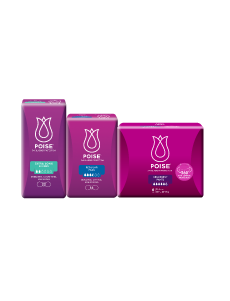My Trampoline Jumping
Your kids keep you on your toes. You like to keep up with them, but lately, you feel like you’re holding back at times. We explain how you can get back the fun, energetic you that doesn’t think twice about a trampoline challenge.
Many women say their kids keep them young. Be it challenging you to a race, playing hide and seek, or building sandcastles, spending time with your children is one of the most rewarding times in your week. But lately, you might feel like you’ve been holding back from some activities for fear of bladder leakage.
It can be a very surprising, and embarrassing moment of realisation when it happens, but the truth is, it’s completely normal, common, and often manageable.
High intensity exercise, like trampolining, or other things like sneezing or laughing, impacts your bladder with sudden pressure. If your pelvic floor muscles are weakened, it can result in the release of a small amount of urine, which is called light bladder leakage. The loss of strength in these muscles is often due to childbirth, and can be regained with pelvic floor exercises (Kegel exercises) or Pilates.
The other way you can manage light urinary leakage is with the right products. Many women rely on feminine hygiene products or period pads and liners instead of those designed specifically for light bladder leakage, often because they might not realise there’s difference.
Incontinence can affect women of all ages. POISE® has a range of products which are comfortable, discreet, and up to two times more absorbent than period pads and liners to help you feel confident in any situation – so you don’t have to say no again.
Where To Buy
These articles might also be interesting to you
Kimberly-Clark Singapore makes no warranties or representations regarding the completeness or accuracy of the information. This information should be used only as a guide and should not be relied upon as a substitute for professional medical or other health professional advice.
Sources
Arnold, J., McLeod, N., Thani-Gasalam, R. and Rachid, P. (2012). RACGP - Overactive bladder syndrome –management and treatment options. [online] Racgp.org.au. Available at:
http://www.racgp.org.au/afp/2012/november/overactive-bladder-syndrome/
[Accessed 6 Apr. 2015].
Bladderclinic.com.au, (2011). Overactive Bladder (OAB). [online] Available at:
http://www.bladderclinic.com.au/bladder/overactive-bladder-oab [Accessed 6 Apr. 2015].
Cherney, K. (2013). Home Remedies for Overactive Bladder. [online] Healthline. Available at:
http://www.healthline.com/health/overactive-bladder/home-remedies#Overview1
[Accessed 6 Apr. 2015].
Eilber, MD, K. (2015). What Is The Difference Between A Small Bladder And An .... [online] EmpowHER. Available at:
http://www.empowher.com/overactive-bladder/content/what-difference-between-small-bladder-and-overactive-bladder-dr-
[Accessed 6 Apr. 2015]
Maher, MD, C. (2003). Welcome to Chris Maher's Urogynaecology Australia Web Site. [online] Urogynaecology.com.au. Available at:
http://www.urogynaecology.com.au/Overactive.htm [Accessed 6 Apr. 2015].
Siamak N. Nabili, M. (2014). Overactive Bladder: Facts for Men, Women, and Children. [online] MedicineNet. Available at:
http://www.medicinenet.com/overactive_bladder/article.htm [Accessed 6 Apr. 2015].
Tidy, MD, C. (2013). Overactive Bladder Syndrome, Bladder Problems | Health | Patient.co.uk. [online] Patient.co.uk. Available at:
http://www.patient.co.uk/health/overactive-bladder-syndrome [Accessed 6 Apr. 2015].
Webmd.com, (2014). Overactive Bladder in Children (Child Incontinence): Signs, Causes, and Treatment. [online] Available at:
http://www.WebMD.com/urinary-incontinence-oab/overactive-bladder-in-children
[Accessed 6 Apr. 2015].
Canceraustralia.gov.au, (2019). Bladder cancer statistics in Australia | Bladder Cancer. [online] Available at:
https://bladder-cancer.canceraustralia.gov.au/statistics
[Accessed 6 Jun. 2019].
Other urinary incontinence causes









